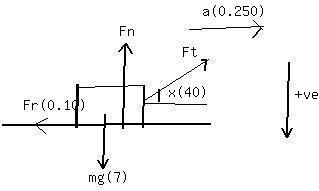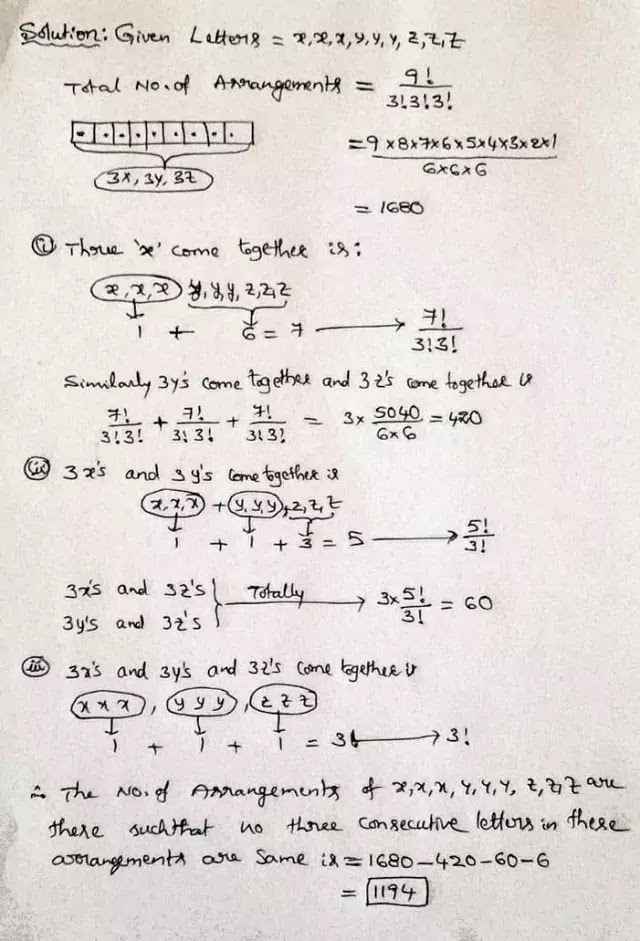#630 The 4.00-kg block in the figure isattached
The 4.00-kg block in the figure is attached - Physics
ChemistryExplain daily providing Q&A content “#630 The4.00-kg block in the figure is attached" in Physics, Ap physics 1 practice test, Best colleges for physics, Best physics books, Best physics schools
Get the Free Online Chemistry Q&A Questions And Answers with explain. To crack any examinations and Interview tests these Chemistry Questions And Answers are very useful. Here we have uploaded the Free Online Chemistry Questions. Here we are also given the all chemistry topic.
ChemistryExplain team has covered all Topics related to inorganic, organic, physical chemistry, and others So, Prepare these Chemistry Questions and Answers with Explanation Pdf.
For More Chegg Questions
Join Our Telegram Channel for Covers All Update by ChemistryExplain:- Click Now
Free Chegg Question
A)What is the tension in the lower cord?
Best Free Chegg Answer
We have the following forces acting on the weight
F1 = upper string VECTOR (up and to the left)
F2 = lower string VECTOR (down and to the left)
W = weight VECTOR (straight down)
The net force is the addition of these forces
F(net) = F1 + F2 + W
By observation, the weight moves in a horizontal plane, therefore the net force is purely horizontal.
F(net) = ( F3, 0) N
where F3 is unknown at the moment, but we expect it to be -ve, because the motion is centripetal (& therefore to the left at the instant of time of the drawing)
We need to get some results for F1, F2 and W.
Now W is the easiest,
W = (0, -40) N (vector is straightdown with magnitude 4N*10m/s^2 = 40N)
F1 & F2 will lie along the direction of the strings (upper and lower), and will therefore make similar triangles with that formed by the pole and the strings.
Hence from diagram we have for F1,
x : y : r = 0.75m : 1m : 1.25m = 48N: 64N : 80N
from similar triangles OR
F1 = (-48, 64) N [-ve sign because it points left and up from the weight ]
& for F2 we have,
x : y : r = 0.75m : 1m : 1.25m = 0.6*T :0.8*T : T
i.e.
F2 = (-0.6T , -0.8T ) [-ve signs point down and to the left from the weight ]
Remembering we have,
F(net) = F1 + F2 + W
or after substituting,
(F3, 0) = (-48, 64) + (-0.6T , -0.8T ) + (0,-40)
A)
This gives two equations, firstly the y-component,
0 = 64 - 0.8T + -40 => T =30N
B)
and then the x-component
F3 = -48 -0.6T
=> F3 = -48 -18 = -66 N
Now F3 is a centripetal force, so
F3 = mw^2R
=> w = sqrt(66/(4*0.75)) = 4.7 rad/s
which still needs to be converted to RPM.
C)
The tensions in the strings are going to change, but the strings will remain at the same angles. The strings are of equal length and hence cant change their positions
when under tension.
i.e. if T1 is the tension in the upper string, and T2 is thetension in the lower string we have,
F1 = (-0.6T1 , 0.8T1 )
F2 = (-0.6T2 , -0.8T2 )
from similar triangles as above.
we still have
F(net) = F1 + F2 +W
which gives,
(F3, 0) = (-0.6T1, 0.8T1) + (-0.6T2 , -0.8T2 ) +(0, -40)
when the cord goes slack (T2 =0) so,
y-component,
0 = 0.8T1 - 40, => T1 =50N
x-component,
F3 = -0.6*50N = -30N
F3 = mw^2R
=> w = sqrt(30/(4*0.75)) = 3.2 rad/s
we'd expect that the angular speed should decrease in order for the bottom string to go slack.
Hope that helps
Labels: Chegg, Free Chegg Answer, Q&A Physics








 ------------(1)
------------(1)
















 hrs
hrs



